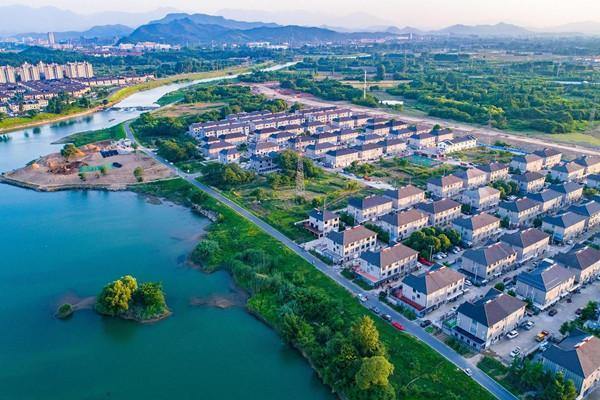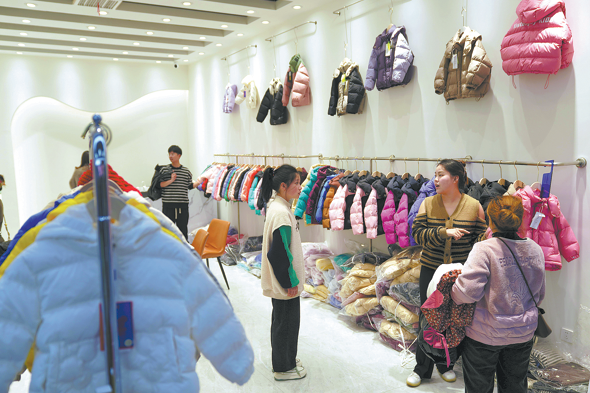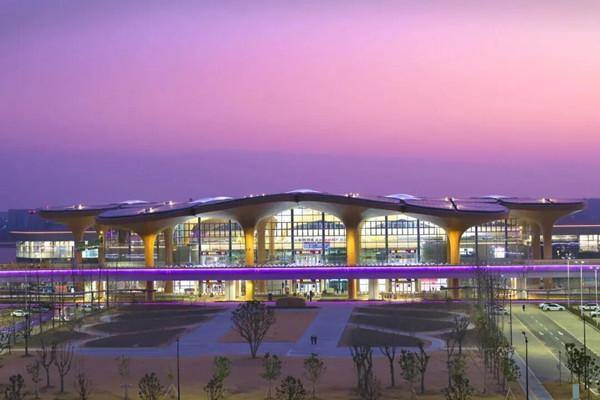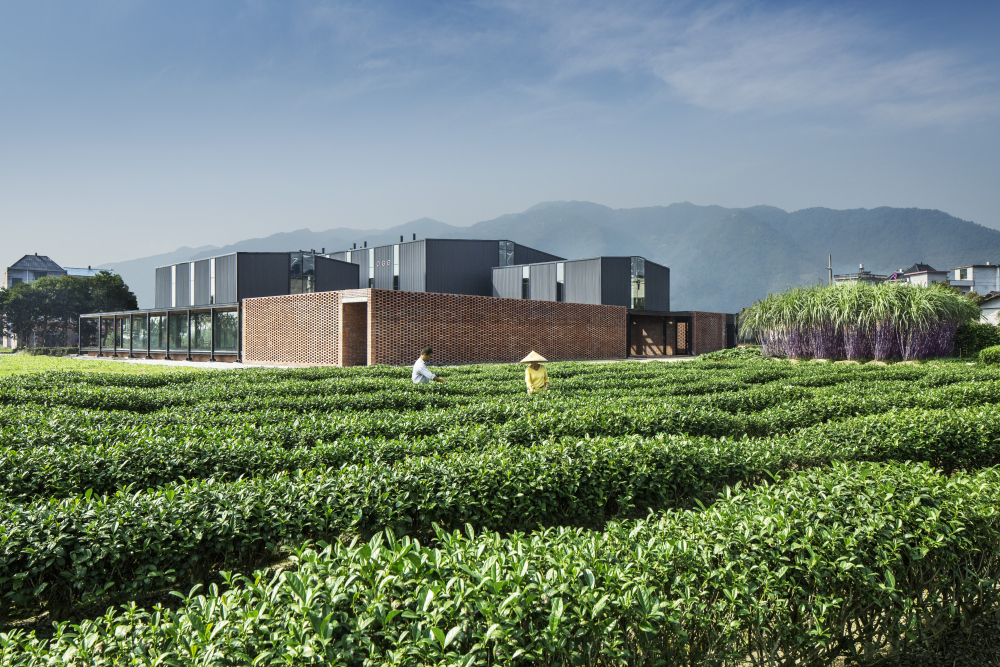
松阳的土地很神奇,会长出乡村振兴的希望之花。
浙江松阳县兴村的红糖工坊,就是其中一朵,开得热闹。
在2019年WIA年度建筑师奖和Moira Gemmill新兴建筑奖全球45岁以下女性建筑师顶级奖项中,中国女建筑师徐甜甜以浙江松阳的红糖工坊项目入围。
红糖工坊,顾名思义,是以红糖为题,展开了设计的想象。
历史悠久的松阳县,位于浙江省西南部丽水市。松阳县域范围内保留有上百个古村落,为中国传统村落保护发展示范县,被誉为“最后的江南秘境”。
如果时间退回到2017年之前,位于县内大木山茶园附近的樟溪乡兴村还不是如今这个样子。红糖是兴村重要的产业,村民至今保留着已有上百年历史的古法工艺制红糖传统,每年的深秋季节,甘蔗收割下来,被熬制成浓稠的红糖,香喷喷、甜滋滋,兴村出产的红糖在周边地区很受欢迎。
也因为红糖,以此为生的当地村民有了经济来源,很多村民有了积蓄,就开始改善居住条件,新建了许多三四层的楼房,但这对于原本传统风貌完整的兴村而言,带来了一定的破坏。与仍然保留大量夯土墙传统民居、处于“空心状态”的传统村落不同,兴村这样的水泥楼房和夯土墙民居并存的村庄,可能并不具备评选传统村落的风貌条件,却保留着活跃的传统业态,拥有稳定人口。这样一个新旧并存的村庄,其实蕴含着不少发展的力量。
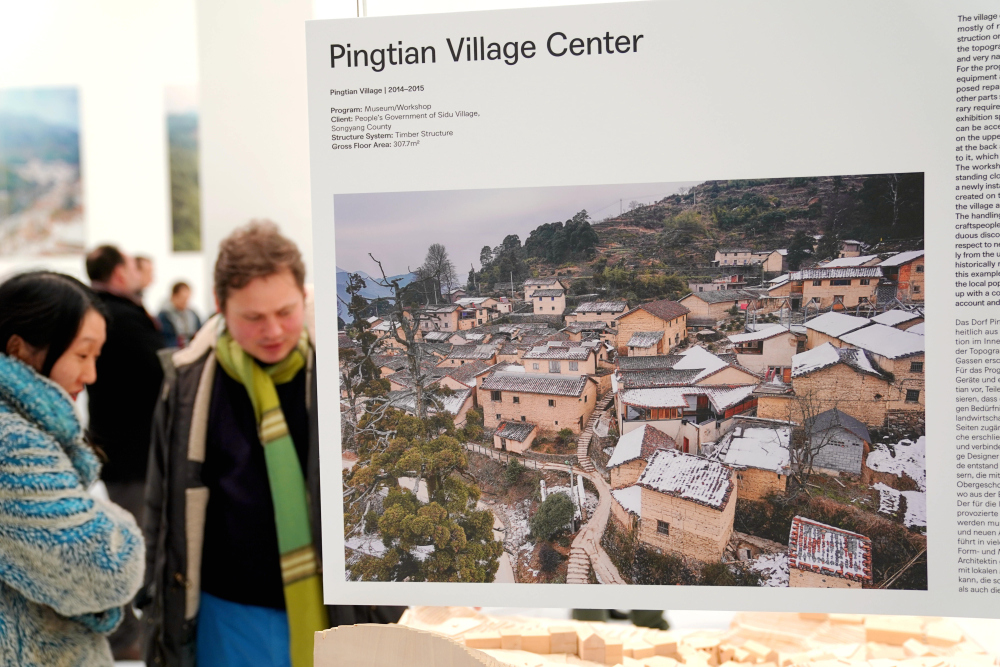
转变,也悄悄发生在这一年。
这一年,著名建筑设计师徐甜甜所在的DnA建筑事务所开始进入这片土地。一座传承村庄内核文化传统元素的红糖工坊,开始在这批优秀的建筑师心中酝酿。
建筑师相信,即使建筑“硬件”不再崭新,人文“软件”上的丰富生机仍可以重新给村庄注入活力。
在这片传承了几百年红糖产业的土地上,设计建造一座全新的红糖工坊,这个想法听着就让人激动。
新的红糖工坊,将完全摒弃原来村子里随处可见的红糖家庭作坊——
这些小作坊基本是由简陋的轻钢棚架搭建,管理杂乱无章,而且卫生条件不好,也构成村里的火灾隐患。
它有着超乎人们想象的外观——
红糖工坊建筑体分为南北两部分:由红砖围合的北侧与甘蔗地相邻,用来堆放甘蔗和作为后勤服务;南侧的视线朝向村庄与田野,成为开放的红糖生产展示区。
三个挑高的轻钢体,好像从田野里自然生长出来的三个现代文明体,让这座全新的工坊在这片盛产甘蔗的地里显得并不突兀。
工坊里三个挑高的轻钢体分别被作为休闲体验区、甘蔗堆放区以及带有六个灶台三十六口锅的传统红糖加工区。环绕这三个区块的线性走廊,成为红糖生产剧场的环形看台和参观流线。
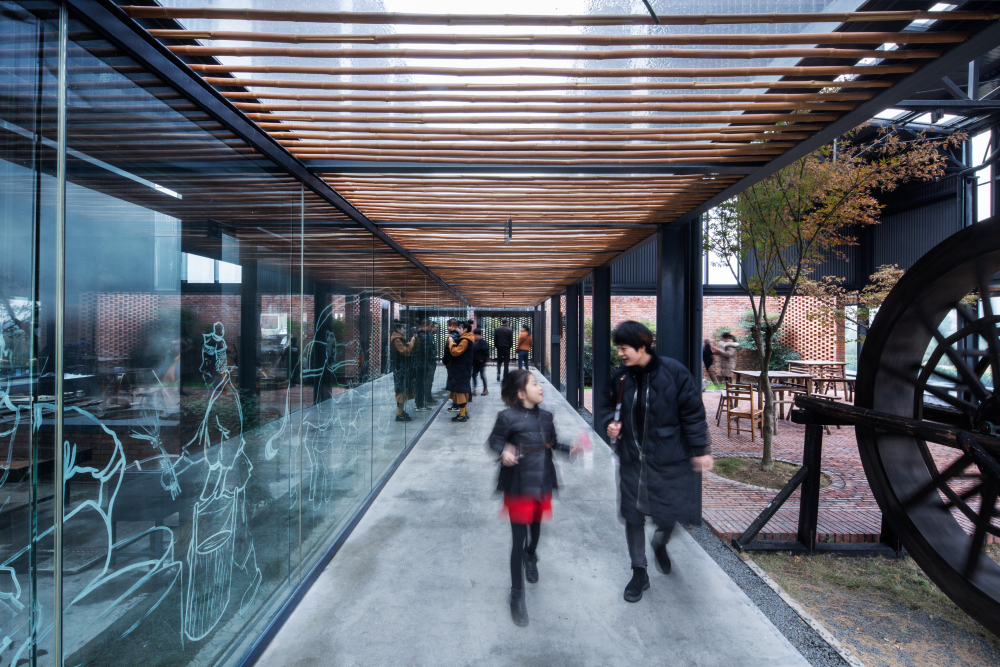
兴村红糖工坊成了一个“田野间的梦想天地”——它既能容纳当地村民们习以为常的生产活动和生活现场,同时它又像一件艺术品,既具备视线开放的空间设计,也能让生产现场变得如同戏剧表演现场,对外、对内均成了对场景、田园和现场的展示。
这座工坊,强调着传统文化的价值,可谓是活态展示的博物馆。工坊的表演性、展示性赋予了它“舞台”的性质,既是村庄生产活动的舞台,也是乡村生活、田园诗意叠加的舞台。
从某种程度上来说,新的红糖工坊传承了村庄内核的传统文化元素,体现了其内在的文化价值,也展示了兴村不同于其他古村落的独特特征。兼具红糖生产厂房、村民活动和文化展示等功能的兴村红糖工坊,成为一处衔接村庄和田园的重要场所——当地的村民田间劳作之余可以在此休憩,外来的游客也可在此体验田园诗意。
你可以感受到这座现代工坊,蕴含着强大的文化内核。
红砖、竹子……是当地常见的建筑材料,都被纳入了设计之中。纤细的竹条整齐地排列成格栅,不仅提供遮阳,也强调了“灰空间”的半室外特质。红色的砖则给人一种红糖般的温暖感受。
兴村红糖工坊投入使用后,极大地改善了原本传统小作坊式的生产条件,促进传统红糖加工走向产业化加工,带动相关产业,实现“吃——品红糖,住——红糖特色民宿,游——甘蔗田风景,购——传统红糖产品,娱——体验红糖加工”的红糖旅游系统。这些提高了村民收入,增加了村民的文化自信。
如今,红糖工坊作为兴村的公共文化场所,已经举办多场木偶戏演出及体验传承活动,契合了建筑师希望拓展工坊功能作为剧场空间的设计意图。
就这样,这座蕴含着浓浓糖香味道的工坊,好像梦中小时候的家乡,也携带着浓浓的乡愁滋味,走进了人们的视线。

Brown Sugar Factory in Songyang
The year 2017 marked the beginning of significant architectural changes in rural Songyang when Xu Tiantian, an architect based in Beijing, arrived at the county of mountains in the south of Zhejiang. Since then she has populated the rural areas with a series of projects that have put a new face to the rural villages in Songyang and put Songyang on the world map of modern architecture. For what she has done in Songyang, Xu Tiantian is the winner of the Moira Gemmill Prize for Emerging Architecture in the 2019 Women in Architecture awards. Of the impactful projects, she did in Songyang is a brown sugar factory located in Xincun Village.
Brown sugar is a crucial pillar of the village’s economy. In autumn, villagers harvest sugarcanes and make brown sugar. With income from sugar sales, villagers have built new houses of three or four stories. With a history of hundreds of years, the village presented an anachronism of new houses and numerous brown sugar mills, which were small and showed an architectural ugliness in the eye of Xu Tiantian and her colleagues. The architects wanted to build a big village brown sugar factory so that all the small mills could be removed from the village. They believed it was the first step to keep the village clean and free of fire risks and pollution.

Xu Tiantian, the architect of the brown sugar factory in Songyang, speaks at a professional forum.
The new brown sugar factory looks so beautiful that villagers just wowed at the imagination and inspiration of these architects from Beijing and felt proud of the new site when first taking a tour inside the factory, surrounded by the village on two sides and farmlands from the other two sides. The consideration behind the location is, villagers can store and process the harvested sugarcane crop more easily. Inside the red-brick wall on the northern part of the factory compound is a storage area and a space for backstage services.
The structures look light and allow natural light to come through the roofs and glass walls. The light-weight steel structures function respectively as a visitor’s center, a storage space, and an extremely spacious workshop that houses a system of 36 woks heated by six ovens, a traditional technology that has been used in the village for hundreds of years. The three sections are like a theater where visitors can take a tour and see how brown sugar is made.
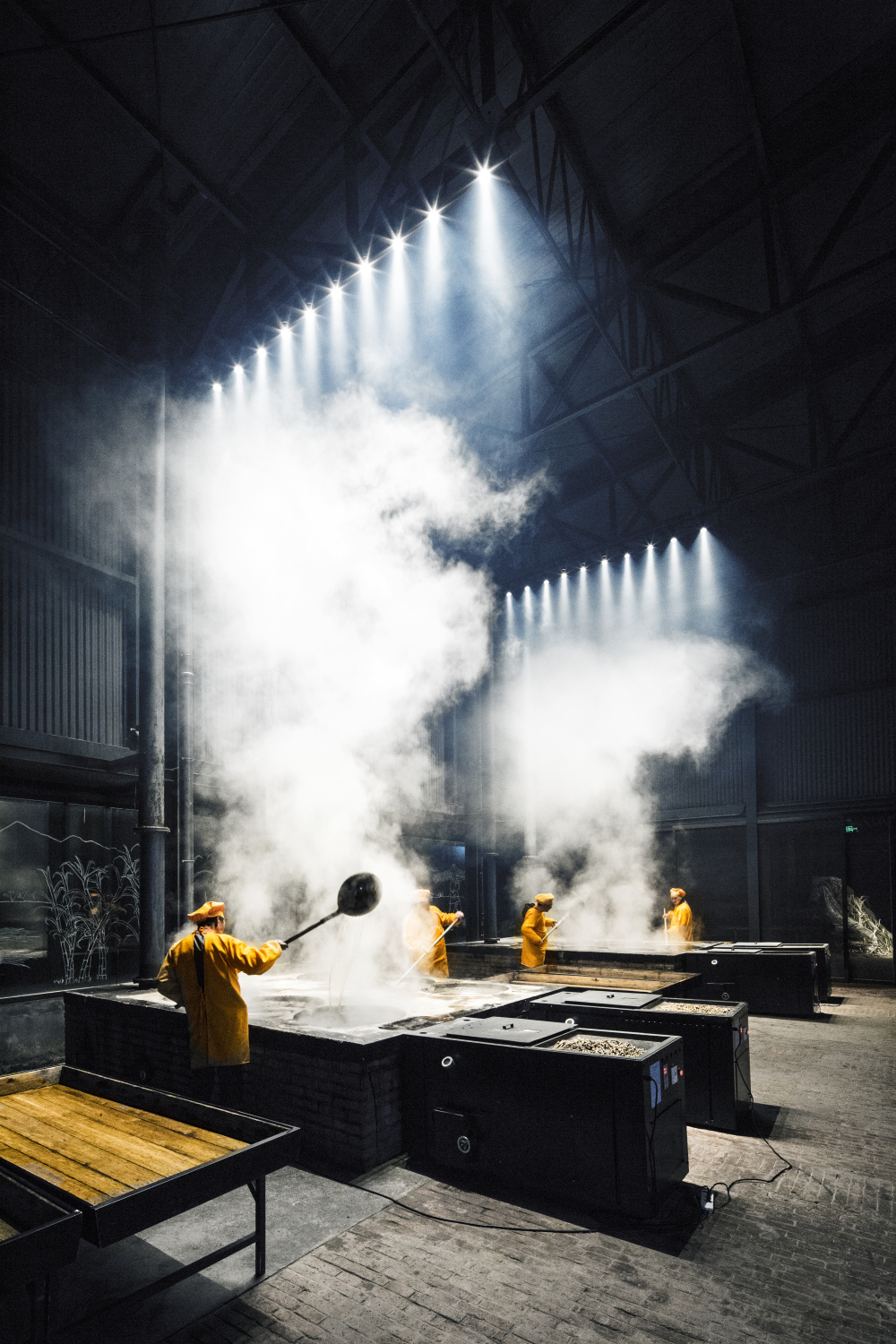
The factory presents the village’s new identities in a delightful way. It is a production compound, an architectural masterpiece, a theater with a backdrop of the outside farmlands, village houses, and distant mountains, a museum where the tradition is very much alive, a tourist attraction, a space for village events, a topic that has been discussed at home and abroad.
Since the launching of the factory, sugar-centered tourism has boomed in the village. Visitors flock to the town to see how brown sugar is made, tour the village and sugarcane fields, have a hands-on experience of the production, and stay in household hostels. Tourism is now a strong source of income for villagers. The factory has hosted a series of puppet shows and hands-on experience events. That’s exactly what Xu Tiantian and her colleagues had in mind when they put their ideas to the blueprints of the factory.


(Executive Editor: Xinyu Xie)

